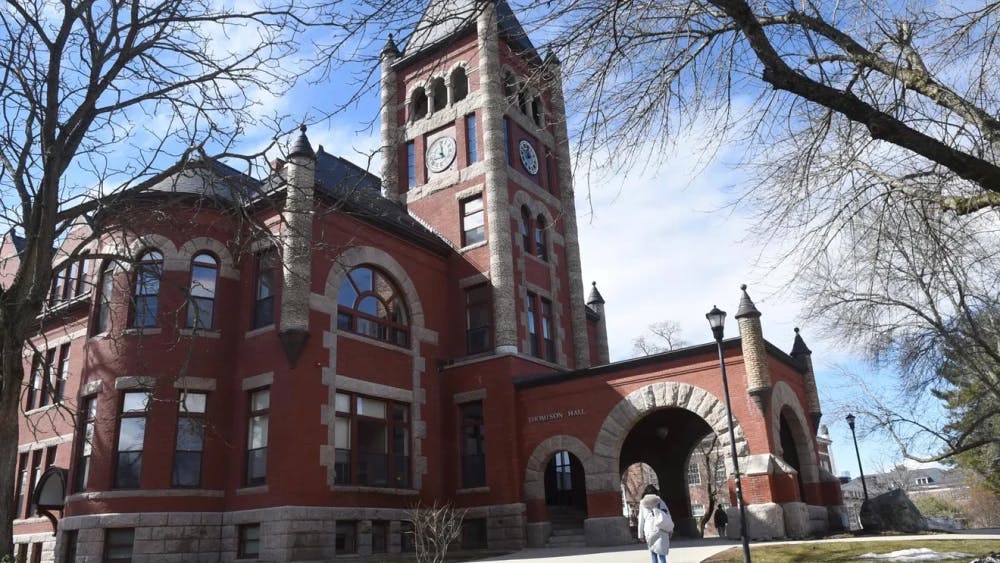By Edith Allard
Contributing Writer
The new New Hampshire Veterinary Diagnostic Lab (NHVDL), located beside the greenhouses on Main Street, enjoyed an open house yesterday inviting local stakeholders to view the new services that this building will have to offer.
Rows of benches and a podium sat outside the lab building, just beside long tables adorned with snacks, decorative pumpkins and flowers.
Speakers for the day included managing director of the lab Rob Gibson, commissioner of agriculture Lorraine Merrill, UNH president Mark Huddleston, former senator Jim Rausch and UNH Dean of COLSA Jon Wraith. The group collectively spoke with happiness and admiration about the new Vet Lab, praising the project as a result of what UNH and the state can do when they work together.
As they spoke, murmurs and nods of agreement rippled throughout the group of about 116 attendees. Local farmers, veterinarians, students and other agricultural workers made up only some of the stakeholders present for the open house.
Bill Yeaton, owner of Yeaton Dairy Farm in Epsom, attended to see what services he would be able to take advantage of in the future.
“I’m hoping to be able to test some milk samples,” he said. “This is a great opportunity.”
Dean Elder, resident vet for UNH, also came to the open house and echoed Yeaton’s content with the new Vet Lab, particularly with the opportunities for testing.
“It’s going to provide a lot of service to veterinarians and the state as a whole,” he said.
A variety of clients can send in samples from their animals via post and pay to have them tested at the lab. In addition to testing for diseases, the lab can also perform pregnancy testing for cattle, sheep and goats.
The lab’s benefits also move far beyond testing for dairy farmers and local veterinarians. In her address, Merrill called the NHVDL the agricultural department’s “first line of defense for potential disease incidents that could impact animal health, the economy or public health.”
According to a fact sheet posted inside the new building, 6,000 chickens are tested annually for avian flu and mycoplasma, two diseases that can potentially affect humans as well as animals. A further 15,000 chickens are tested annually for typhoid, and 10,000 horses are tested for equine infectious anemia.
Gibson said that the new center will lead to an even more efficient workflow. The opportunity for more lab analysis isn’t the only benefit of the new NHVDL, however. A new hydraulic table and a soon-to-come lift will allow workers at the lab to perform necropsies on animals up to 4,000 pounds.
During his speech, Wraith estimated that about 500 students in a variety of majors will in some way benefit from the new equipment and opportunities offered by this lab.
Gibson, like most of the attendees, is pleased with the new lab.
“We are working with an amazing group of talented individuals,” he said. “(Our) mission has such an impact on health—both for humans and animals.”














